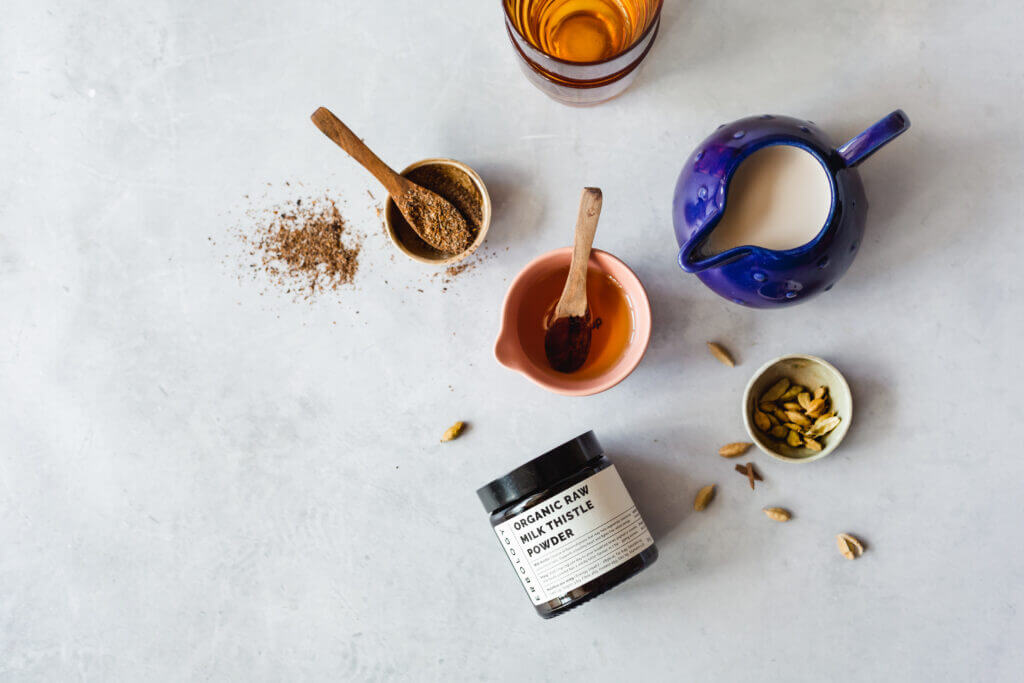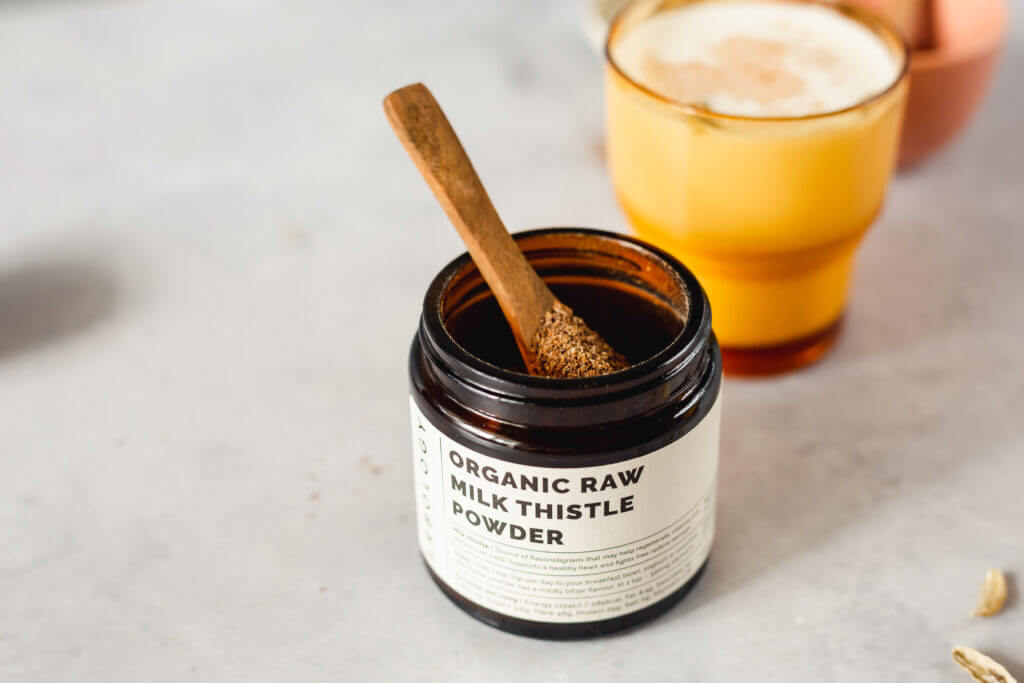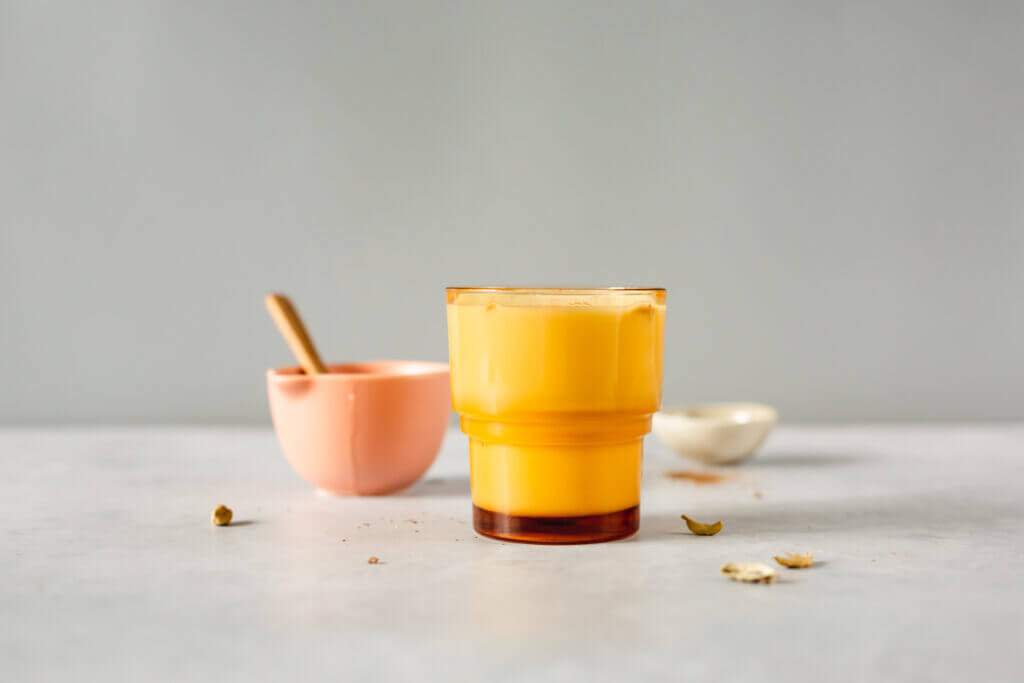How to make milk thistle tea
- 1

undefined 3'

undefined 6'

undefined

undefined
- 1

undefined 3'

undefined 6'

undefined

undefined
Mystical milk thistle
Native to the Mediterranean region, milk thistle (Silybum marianum) is a robust and striking plant that grows on rocky slopes and outcrops. It has spiky purple flowers that draw the eye, surrounded by sharp, shiny green leaves lined with pale white veins. According to legend, these white streaks appeared when a drop of the Virgin Mary’s milk fell on the plant’s leaves. This is why people also refer to the milk thistle by holy-sounding nicknames such as blessed milkthistle and Mary’s thistle. Despite its spiny appearance, it’s actually from the same family as the daisy and the sunflower. In addition to it featuring in religious folklore, people have been using milk thistle as a traditional remedy for generations. It’s believed that the Greek physician and botanist Dioscorides (40–90 AD) was the first person to mention the plant’s healing properties.(1) Since then, numerous herbalists across the ages have written about its medicinal benefits. Meanwhile, modern scientific studies are finding convincing evidence to back up the veracity of these claims. There are lots of different ways in which you can take milk thistle. The leaves, stem and seeds are all edible, and you can steep them in hot water to make a basic milk thistle organic tea. Another option is to use the seeds to brew an alternative to coffee. With Erbology, you can get cold-pressed milk thistle oil and milk thistle powder – like the one we use in this recipe. You can then add these to soups, stews and smoothies to make your life easier!
The milk thistle tea recipe: soothing for body and mind
While it’s possible to cook and eat milk thistle leaves, stalks and flowers in salads and other dishes, nowadays it’s quite tricky to find fresh plants to work with. That’s another reason why choosing to use milk thistle powder or oil is more convenient. You’re able to include these in all sorts of recipes – including milk thistle tea. Technically, you can make milk thistle tea by just stirring milk thistle powder into hot water. However, with the addition of just a few simple ingredients, you can create a truly delicious and soul-warming drink in under 10 minutes. In our opinion, the extra effort is more than worth it! The base of this recipe is unsweetened oat milk, which gives the tea a rich and creamy texture. Feel free to substitute this for any other type of plant-based milk, such as almond or coconut, if you prefer. However, remember that if you use a sweetened variety, you might like to alter the amount of honey or agave nectar you add. This will help to balance out the flavour of the drink. Speaking of sweeteners, you’ll notice that in the recipe, we’ve given you some leeway in terms of how much you want to use. This enables you to adjust the taste to suit your palate or the time of day you’re enjoying your milk thistle tea. Incidentally, if you don’t have honey or agave nectar on hand, maple syrup can be a great alternative for adding sweetness. Whichever you choose, it will be a perfect counterpart for the slight bitterness of the milk thistle powder. 
Cardamom power
Milk thistle powder brings a nutty flavour to the tea, which we complement with the addition of crushed cardamom pods. This spice comes from various plants in the ginger family, and is a common ingredient in Indian, Middle Eastern and Swedish cuisine. The taste is piney yet subtly sweet, suiting beverages, desserts, and savoury dishes. It’s a fantastic way to bring extra warmth, aroma and vibrancy to milk thistle tea. This is especially true when you pair it with a sprinkle of cinnamon at the end. There are two main types of cardamom – green and black – which each have a unique flavour. Use green cardamom for a hint of lemon and mint, or black cardamom if you want more of a smoky note to your milk thistle tea. You might also come across white cardamom, which is similar to green cardamom, but with a less intense taste. Cardamom has plenty of health benefits of its own. These include helping to lower blood pressure and protect the liver, making it an ideal addition to liver health-supporting milk thistle tea.(2)(3) It can even improve oral health and tackle bad breath by fighting the common mouth bacteria that cause gum disease and cavities.(4) Therefore, you can feel confident enjoying a cup before heading out!
Silymarin: the source of milk thistle tea benefits
While cardamom offers a range of health-boosting properties, the real star of this recipe is, of course, the milk thistle. This versatile ingredient can have a cleansing and detoxifying effect on the body, helping to improve your overall wellness. This is largely thanks to silymarin, the plant’s active ingredient. Silymarin is a group of plant compounds that may have antioxidant, anti-inflammatory, and antiviral properties. It can help to fight free radicals and protect the body from the oxidative damage they cause. Silymarin is generally considered safe for human consumption. However, the one caveat to this is that people who are pregnant, breastfeeding or trying to conceive are advised not to take it. It’s also sensible to speak to your doctor before taking milk thistle if you’re currently on any prescription medication. This will just ensure that there won’t be any unwanted interactions between them.
What is milk thistle tea good for?
So, what exactly can the silymarin in milk thistle tea help with? Firstly, it’s thought to be beneficial for your liver. Some studies suggest that it can improve liver function in those suffering from liver diseases or damage.(5) Interestingly, milk thistle may also be useful in protecting the liver from certain toxins contained in poisonous mushrooms.(6) Another potential benefit of milk thistle tea relates to the brain. Traditionally used to treat conditions such as Alzheimer’s, research indicates that its anti-inflammatory and antioxidant properties may have a neuroprotective effect. This could assist in preventing or slowing down cognitive decline.(7) Although further studies need to be conducted to confirm the exact impact of milk thistle in these areas, the results are looking positive so far! In addition to silymarin, milk thistle seeds are also rich in vitamin E. This has a wealth of potential health benefits, including nourishing your skin, supporting the immune system, and protecting the health of your eyes. Moreover, some studies suggest that vitamin E may help to stop or delay cognitive decline, although further research is required to clarify this.(8) 
The advantages of using milk thistle powder
As mentioned above, using a cold-pressed powder to make your milk thistle tea is a far more convenient option than sourcing fresh plants or grinding your own seeds. It also has advantages over simply taking a milk thistle supplement. This is because it’s not always clear what goes into such supplements, for example fillers and binding agents. Plus, the capsules often contain gelatine or other non-plant-based ingredients. Here at Erbology, we’re passionate believers in consuming your key nutrients naturally through food. This is a more effective method because it allows beneficial phytonutrients to work together in synergy, rather than trying to isolate just one. Not only that, but compared to taking supplements it also gives you more knowledge about and control over what goes into your body. On top of which, it provides you with the opportunity to try out delicious new ingredients and recipes like milk thistle tea!
Introducing our milk thistle powder
We make our Organic Milk Thistle Powder from 100% milk thistle seeds – with no fillers, binding agents, preservatives, or any other additives. We source our seeds sustainably from small, organic farms in Eastern Europe. Farmers pick them during the annual harvest season at the end of summer and in early autumn. Once picked, we carefully cold-press the milk thistle seeds to remove the oils, and then grind them. This results in a concentrated powder that’s rich in nutrients and ready for you to use in all sorts of recipes. We ship our milk thistle powder out in environmentally friendly amber glass bottles, which you can then reuse or recycle once empty. That way, you’ll be caring for the planet at the same time as looking after your body! Milk thistle powder is a really versatile ingredient. Although you might not want to have a spoonful of it on its own, it goes very nicely in lots of different recipes. As well as milk thistle tea, you can add it to other beverages such as smoothies. It also works brilliantly in savoury dishes like stews, soups, pasta, and salads. Alternatively, you might like to blend it up with a dip, or sprinkle it on top of your breakfast bowl. Don’t feel as though you’re restricted to savoury recipes either. Milk thistle powder can be a fantastic health-boosting addition to sweet treats like cookies and cakes, adding a nutty taste to the mix. Consuming milk thistle powder with other foods makes it easier for your body to digest it. Therefore, you should feel free to experiment with interesting ways of including this nutritious ingredient in your diet! Simply store the jar in a cool, dry place and sprinkle a teaspoon into your chosen dish. 
How to enjoy our milk thistle tea
There’s no particular time of day that you need to take milk thistle. Therefore, it’s up to you whether you’d prefer to start your day with a cup or enjoy one at lunchtime. Its soothing taste – plus the fact that it’s caffeine-free – also makes milk thistle tea a splendid choice to drink in the evening. A mug of it is sure to warm you up on dark and chilly nights! One key point to remember when making any type of milk thistle tea is that the powder doesn’t dissolve in water. This is because it’s made purely from milk thistle seeds. Combined with the fact that this recipe uses cardamom pods, this means it’s important to strain the mix before serving. Speaking of cardamom, be sure to gently crush the pods before adding them to the milk. This helps to ensure that you get the maximum flavour out of them. We recommend enjoying your milk thistle tea with a pinch of cinnamon dusted on top of the cup as a garnish. This fragrant spice adds a distinctive warm flavour and extra hint of sweetness, making your drink even more comforting. As an alternative – or extra addition – you could try including a sprinkle of nutmeg. Cinnamon is derived from the inner bark of a tropical evergreen tree, and brings health benefits of its own to your milk thistle tea. In addition to having antioxidant and anti-inflammatory properties, it could help to reduce blood pressure and keep your heart healthy.(9) Studies also suggest that cinnamon may aid in lowering blood sugar levels.(10) Milk thistle tea is a relaxing hot drink that can help detoxify your body and calm your mind – all while tasting great, too. So, get comfy and snuggle up with a cup!
- 250ml unsweetened oat milk
- 1 tsp Erbology Organic Milk Thistle Powder
- 3 cardamom pods, crushed
- 2-3 tsp honey or agave nectar
- Pinch of ground cinnamon
- Size: 175 g
- Serv. size: 2.5 g
- In a saucepan, add the oat milk together with milk thistle powder, cardamom pods and sweetener of choice.
- Bring everything to a boil then steep the latte for 5 minutes. Strain and pour into a serving cup, garnish with a pinch of cinnamon and enjoy!